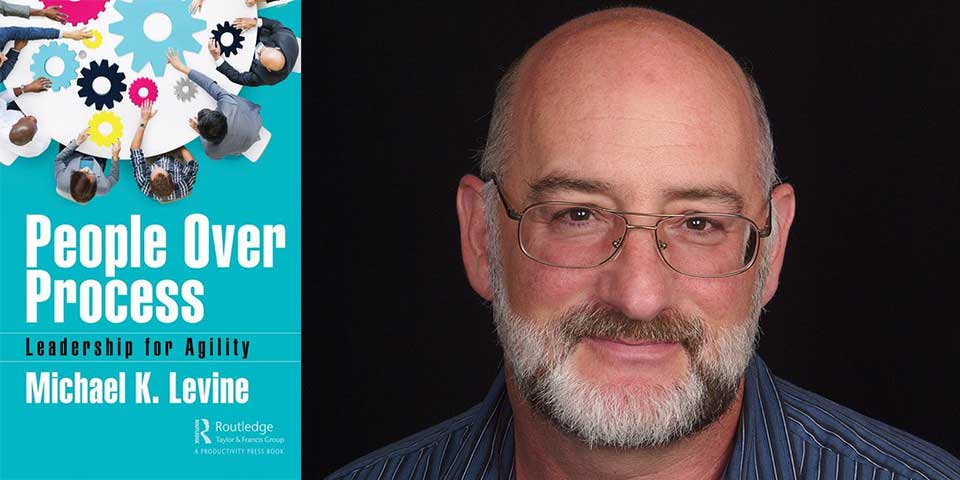The Facilitative Leader: A Model for Agile Success

How do you get a hundred or more people to assemble complex ideas into an invisible machine that enables transactions, controls operations, and makes decisions? Large-scale software development and implementation is a new kind of human endeavor — only on our radar, let alone feasible, within the last fifty years. But human cooperation isn’t new. Humans have worked together to design and build complex, massive physical structures for millennia. Consider the Great Pyramids, the Acropolis, the viaducts of Rome.
Humans have also coordinated in large-scale command and control endeavors, notably involved in waging war. But creating pure ideas, and turning them into code to invisibly run thousands or millions of interlocking instructions? That is another kind of challenge. It is one thing to commandeer armies. It is another thing to engage in purely intellectual collaboration that nevertheless demonstrably works, or doesn’t.
But the key is how we lead these efforts. We need to be able to:
1. lead teams of people to deliver valuable solution; and
2. enable teams within larger organizations to succeed.
This is Facilitative Leadership for Agility: it unleashes potentially large groups of highly intelligent, experienced, and diverse people to most successfully deliver outstanding results. But this requires than one leader: an agile development team needs multiple facilitative leaders, especially in the critical arenas of development, testing, deployment, user experience, and program management.
The Facilitative Leader for Agility draws on three specific elements to succeed: rigor, alignment, and efficiency (RAE). This is an entirely different style of leading than many of the labels in use today — such as the Process Enforcing Leader, the Directive Leader, or the Risk Managing Leader — none of which work very effectively in the field of agile software development.
Facilitative Leadership works where these other leadership models will fail. It uses the RAE model to combine good decision-making, common approaches and goals, and not wasting time within the right framework for discussion, testing and accomplishment:
Rigor
Rigor comes first: it is primus inter pares (first among equals). In dealing with the uncertainties driving agile adaptive process control, there are many crucial decisions to be made. Rigor means clearly defining each decision, gathering and considering facts, thoroughly considering options, and making clear decisions. Without rigor, alignment has to be command-driven. And efficiency in pursuit of decision reached without rigor is just doing the wrong things more quickly.
Alignment
Teams must work in a way that gets the best input from all members, and gains understanding and commitment around common goals, schedules, methods, and decisions/directions of all kinds. In this new process of invisibly codifying ideas, perhaps dozens or more team members make many decisions every day that are difficult, if not impossible to control. How do we get everyone’s head in the game, draw out the best in each team member, and gain strong alignment on the way ahead?
Efficiency
In its simplest form, this means respecting people’s time as a valuable commodity not to be wasted, and that goes for all team members. From creating a meeting agenda to establishing a standard format for decision documents to holding in-person meetings instead of meetings by phone, there are proven techniques to drive efficiency that can be learned and adopted. Above all, driving the use of these techniques depends on the stance of leadership. Leadership should make it clear that they are offended by wasting time, as it’s also wasting energy, resources and brain space.
Frameworks
These three elements rest on frameworks — consider them the mechanisms through which a leader facilitates a team to accomplish rigor, alignment, and efficiency. Imagine a framework as a scaffolding on which team members can hang ideas, confident in the flow of each idea towards efficient and rigorous decisions, great software, and ultimate value provision.
This model of facilitative leadership entails participation as opposed to taking the scrum approach to agile — in which the leader sits back to allow the team to work on their own. Instead, the facilitative leader actively encourages and enables quality decisions, makes sure that everyone’s head is in the game and working together, and that the process moves quickly, efficiently, and smoothly. By putting people over process, this brand of leadership enables teams to create the most valuable solutions.
Have you read?
For those who are planning their next business trip, here are the best hotels for business travelers to stay in Boston, New York City, Seattle, Savannah, Orlando, San Diego, and Hawaii.
Bring the best of the CEOWORLD magazine's global journalism to audiences in the United States and around the world. - Add CEOWORLD magazine to your Google News feed.
Follow CEOWORLD magazine headlines on: Google News, LinkedIn, Twitter, and Facebook.
Copyright 2025 The CEOWORLD magazine. All rights reserved. This material (and any extract from it) must not be copied, redistributed or placed on any website, without CEOWORLD magazine' prior written consent. For media queries, please contact: info@ceoworld.biz









